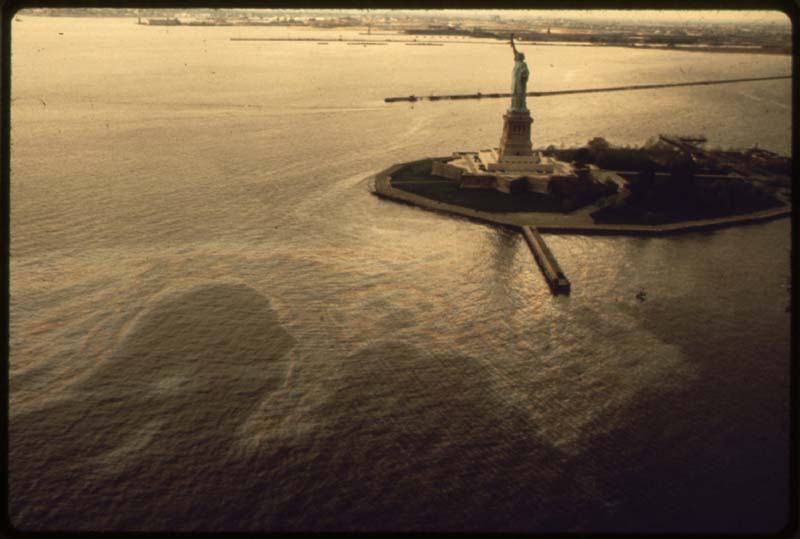Entropy speaks of the biophysical limits to the unfolding of indefinite material progress that substantiates the illusions of perpetual economic growth and developmentalist ideologies. It also speaks of the harmful socio-environmental effects of any civilisational project, which ignores this dimension of thermodynamic physics. The reverse side of the energy profusion that runs through the imaginaries of industrial modernity is materialised by the entropic dispersion of heat that tends to increase over time. Entropy is an anti-modern law, insofar as it challenges the image of ever-increasing, productive progress and exponential social wealth. The inexorable effects of entropy represent the antithesis of industrialist pretensions, that worldview whereby the destiny of the cosmos would consist in channelling its energy for the benefit of human well-being. Like an undercurrent, entropy imposes the force of dissipation as a temporal vector. The energy available for useful work diminishes irretrievably over time. Entropy is thus beyond the control of the anthropocenic man, who in his desire to control the course of nature only accelerates the tendencies towards disorder.

The exhaustion of human labour or the depletion of soils plagued the 19th century imagination as signs of entropy. Since then, capitalism has not ceased to escape forward via an expansive process of commodification of nature. Today, the processes of capital accumulation hang in the air like an increasingly weightless whirlwind that is constantly grabbing primary energy sources. The trend towards the ending of the economy, with which neoliberalism is often associated, overlaps with the expanding appropriation of energy and mineral deposits, a process that may be reaching its historical limit.

On the other hand, past and present manifestations of entropy in workers’ bodies emerge as symptoms of resistance to capitalist valorisation, but also as psychic expressions of malaise. Physical fatigue and libidinal neurasthenia, associated with early industrial capitalism, have given way to a whole range of psychosocial disorders such as fibromyalgia, chronic fatigue, attention deficit, the anxiety epidemic or that mixture of pleasure principle and death drive that Mark Fisher calls “depressive hedonia”: the way in which our dealings with technological devices promote a compulsive form of desire satisfaction that in turn generates constant frustration – for example, with respect to checking emails or social media over and over again. Sometimes depression is no longer so much about the absence of desire as it is about putting it to work through the narcissistic online display and the free generation of data, which are accumulated by the corporations of informational capitalism.
In the face of these historical inertias, imagining culture outside the industrial energy paradigm must assume the entropic dimension of the cosmos and human existence – not in order to surrender to its catastrophic torpor, as intuited by the scientists of the 19th century who associated it with the thermal death of the universe, but to mitigate its effects to the best possible extent.

Bibliography
Angus, I. (2016), Facing the Anthropocene. Fossil capitalism and the crisis of the Earth system, Monthly Review, Nueva York.
Charbonnier, P. (2020), Abbondance et liberté. Une histoire environmentale des idées politiques, La Découverte, París.
Commoner, B. (1973), El círculo que se cierra, Plaza & Janes, Barcelona.
Daggett, C. (2019), The Birth of Energy. Fossil Fuels, Thermodynamics and the Politics of Work, Duke University Press, Durham/ Londres.
Fernández Durán, R. y González Reyes, L. (2018, vol. I), En la espiral de la energía. Historia de la humanidad desde el papel de la energía (pero no solo), Libros en acción, Madrid.
Georgescu-Roegen, N. (1996), La ley de la entropía y el proceso económico, Fundación Argentaria, Madrid.
Horkheimer, M. y Adorno, T. W. (2001), Dialéctica de la Ilustración. Fragmentos filosóficos, Trotta, Madrid.
Hornborg, A. (2001), The Power of the Machine: Global Inequalities of Economy, Technology and Environment, Rowman Altamira, Lanham.
Illich, I. (1974), La convivencialidad, Barral, Barcelona.
Jappe, A. (2019), La sociedad autófaga. Capitalismo, desmesura y autodestrucción, Pepitas de Calabaza, Logroño.
Latour, B. (2008), Reensamblar lo social. Una introducción a la teoría del actor-red, Manantial, Buenos Aires.
Malm, A. (2020), Capital fósil. El auge del vapor y las raíces del calentamiento global, Capitán Swing, Madrid.
Mitchell, T. (2011), Carbon Democracy. Political Power in the Age of Oil, Verso, Londres.
Morton, T. (2018), Hiperobjetos. Filosofía y ecología después del fin del mundo, Adriana Hidalgo, Buenos Aires.
O´ Connor, J. (2001), Causas naturales: ensayos de marxismo ecológico, Siglo XXI, México D. F.
Parikka, J. (2021), Una geología de los medios, Caja Negra, Buenos Aires.
Rabinbach, A. (1990), The Human Motor. Energy, fatigue and the origins of modernity, Basic Books, Nueva York.
Smithson, R. (2009), Robert Smithson. Selección de escritos, Alias, Ciudad de México.
Storr, R. (1998) «A Man of Parts», en Tony Smith: architect, painter, sculptor, MOMA, Nueva York, pp. 10-35
Vindel, J. (2020), Estética fósil. Imaginarios de la energía y crisis ecosocial, Arcadia, Barcelona.
